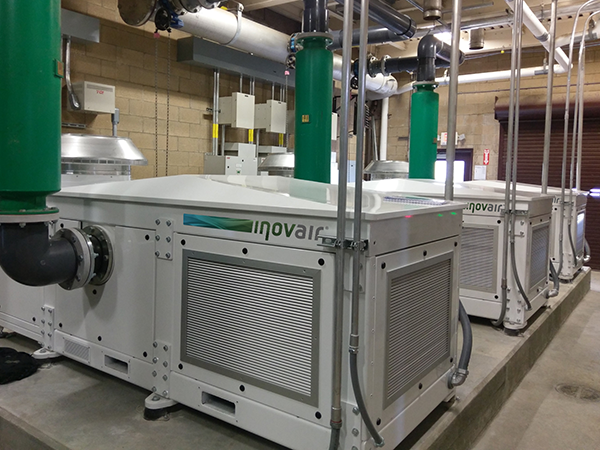The Role of Aeration Blowers in Wastewater Treatment
Wastewater treatment is an essential process for maintaining environmental sustainability and public health. One of the most critical components of this process is aeration, which relies heavily on aeration blowers. These blowers introduce oxygen into the wastewater, promoting the growth of beneficial microorganisms that help break down organic matter. Without effective aeration, biological treatment processes would be significantly less efficient, leading to poor water quality and environmental hazards. For a deeper understanding of aeration blowers in wastewater treatment, visit this resource https://www.waterandwastewater.com/aeration-blowers-wastewater-treatment/ here.
Understanding Aeration in Wastewater Treatment
Aeration is a crucial stage in the wastewater treatment process, primarily in activated sludge systems. It involves injecting air into the wastewater to supply oxygen to aerobic microorganisms. These microorganisms break down organic pollutants, converting them into harmless byproducts. Aeration blowers play a fundamental role in ensuring a consistent oxygen supply, facilitating the degradation of contaminants efficiently. The effectiveness of aeration directly impacts the treatment plant’s efficiency, energy consumption, and overall operational costs.
Types of Aeration Blowers
There are different types of aeration blowers used in wastewater treatment, each with specific applications and efficiency levels. Common types include centrifugal blowers, positive displacement blowers, and turbo blowers. Centrifugal blowers are often used for large-scale operations due to their high efficiency and ability to handle variable airflows. Positive displacement blowers, on the other hand, are ideal for smaller systems requiring consistent air delivery. Turbo blowers, known for their energy efficiency, utilize advanced technology to optimize air delivery while reducing power consumption. Selecting the right blower type depends on factors such as plant size, aeration demand, and energy efficiency considerations.
The Importance of Oxygen Transfer Efficiency
Oxygen transfer efficiency (OTE) is a key factor in wastewater aeration. It measures how effectively oxygen is dissolved into the wastewater for microbial consumption. High OTE ensures better biological treatment and reduces energy costs. Aeration blowers significantly influence OTE by controlling the volume and pressure of air introduced into the system. Advanced aeration blower systems incorporate variable frequency drives (VFDs) to optimize oxygen levels based on real-time demand, further improving efficiency and reducing operational expenses.
Energy Consumption and Cost Considerations
Aeration accounts for a significant portion of a wastewater treatment plant’s energy consumption—often up to 60% of total operational costs. Choosing energy-efficient aeration blowers can lead to substantial cost savings. Modern advancements, such as high-speed turbo blowers and automated control systems, help minimize unnecessary energy usage by adjusting airflow based on actual oxygen demand. Regular maintenance and performance monitoring of blowers also contribute to cost-effective operations by preventing inefficiencies and system failures.
Challenges and Maintenance of Aeration Blowers
Aeration blowers face challenges such as mechanical wear, clogging, and fluctuations in airflow demand. Proper maintenance is essential to ensure their longevity and efficiency. Routine inspections, cleaning of filters, and monitoring of motor performance can prevent unexpected failures and downtime. Additionally, implementing advanced monitoring systems that provide real-time data on blower performance helps operators make informed decisions and optimize aeration processes. Addressing these challenges effectively leads to improved wastewater treatment efficiency and cost savings.
Future Innovations in Aeration Blower Technology
The wastewater treatment industry continues to evolve with technological advancements aimed at enhancing aeration efficiency. Innovations such as intelligent control systems, AI-driven monitoring, and energy-efficient blower designs are shaping the future of wastewater aeration. Smart blowers equipped with sensors can automatically adjust airflow based on oxygen demand, reducing energy wastage. Furthermore, the development of more durable and low-maintenance blower models ensures long-term sustainability for treatment plants. As technology progresses, aeration blowers will play an even more vital role in improving wastewater treatment efficiency and environmental protection.
Conclusion
Aeration blowers are an indispensable component of wastewater treatment, ensuring efficient oxygen delivery for biological processes. Their performance directly impacts treatment effectiveness, energy consumption, and operational costs. By selecting the right type of blower, optimizing oxygen transfer efficiency, and implementing advanced technologies, treatment plants can achieve sustainable and cost-effective operations. With ongoing innovations in aeration blower technology, the future of wastewater treatment looks promising, paving the way for more efficient and environmentally friendly solutions.
